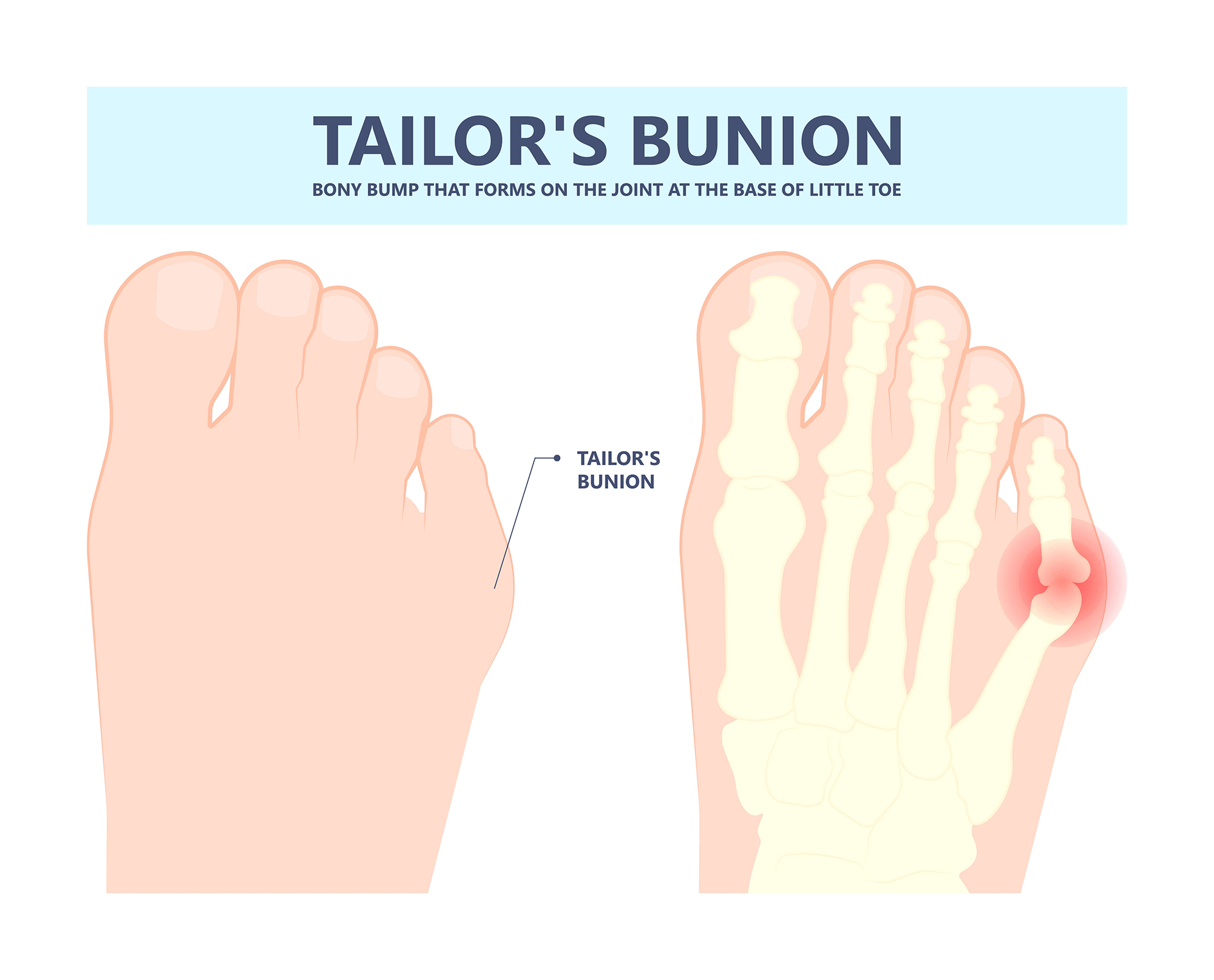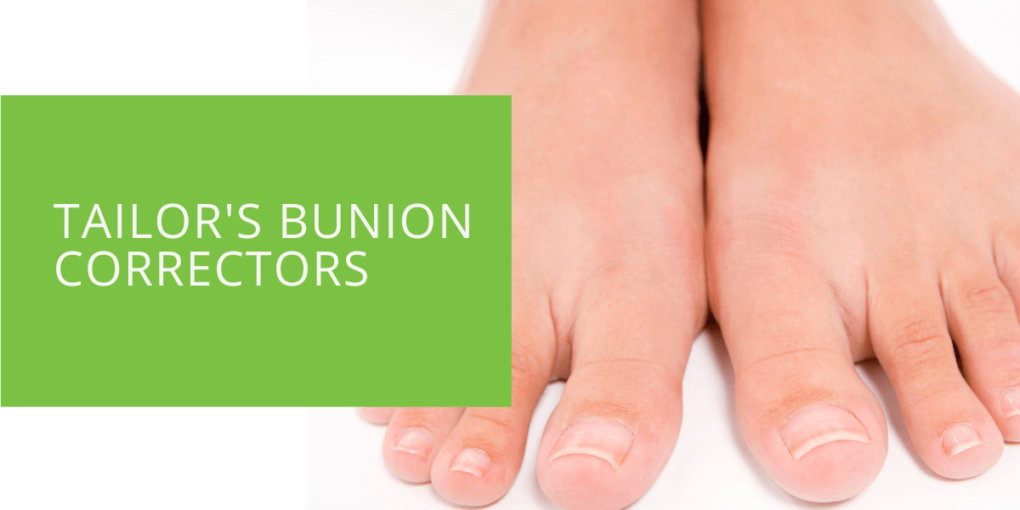Choosing the Right Tailor’s Bunion Corrector
Have you ever felt discomfort or pain near the base of your little toe? If so, you might suffer from a Tailor's Bunion, commonly known as a bunionette. This can be extremely bothersome, impacting your daily activities and overall quality of life. But the good news is that effective solutions are available to alleviate your pain and realign your toes, such as Tailor's Bunion Correctors.
Tailor's Bunions are often caused by a combination of factors, including genetics, footwear, and foot structure. They can also develop due to repetitive stress on the foot, such as from activities like running or jumping. If left untreated, they can worsen over time, leading to further complications. That's why it's important to seek treatment as soon as possible, and Tailor's Bunion Correctors can be an excellent option. These devices are designed to relieve pressure on the bunionette, realign the toes, and prevent the condition from worsening. So, if you're struggling with a Tailor's Bunion, don't suffer in silence - take action now and enjoy a pain-free life!
Key Takeaways
- Tailor's Bunion Correctors are specialized devices designed to alleviate pain, relieve pressure, and promote the realignment of the affected toe in cases of Tailor's Bunions or bunionettes.
- Early intervention is crucial in effectively managing a tailor's bundles, and professional guidance is essential for selecting the corrector.
- Tailor's Bunion Correctors come in various forms, including padding and cushions, splints and braces, and orthotic inserts, each serving a specific purpose in reducing pain and discomfort.
Understanding Tailor's Bunions
Before delving into the details of Tailor's Bunion Correctors, one must understand what Tailor's Bunions are. Also known as bunionettes, they are bony bumps that develop at the base of the little toe. Unlike traditional bunions that affect the big toe, Tailor's Bunions specifically target the pinky toe. Common causes include genetics, ill-fitting footwear, or abnormal foot structure.
Tailor's Bunions can lead to symptoms such as pain, swelling, redness, and difficulty wearing shoes. If left untreated, they can worsen over time, making intervention crucial.
The Importance of Early Intervention
Early intervention is key to managing Tailor's Bunions effectively. As podiatrists, we emphasize the significance of addressing this condition promptly. Seeking professional care in the early stages can prevent further discomfort and complications.
When you visit our clinic, we will comprehensively evaluate your condition, considering your medical history, lifestyle, and the severity of your Tailor's Bunion. Based on our assessment, we'll develop a personalized treatment plan that may include Tailor's Bunion Correctors.
Tailor's Bunion Correctors: What Are They?
Tailor's Bunion Correctors are specialized devices designed to alleviate pain, relieve pressure, and promote the realignment of the affected toe. Unlike standard orthotics, these correctors are specifically tailored for individuals with Tailor's Bunions' unique needs. They come in various forms, each serving a specific purpose.
Types of Tailor's Bunion Correctors
Padding and Cushions
Padding and cushions are among the most common Tailor's Bunion Correctors. They are typically made of soft materials such as gel or silicone. These correctors act as a protective barrier between your bunionette and your shoes, reducing friction and discomfort. They also provide cushioning, making it easier to walk without pain.
Splints and Braces
Splints and braces are designed to realign the affected toe over time gently. They encourage the toe to move back into its proper position by applying consistent pressure. While it may take some time to see noticeable results, these correctors can be highly effective, especially as part of a comprehensive treatment plan.
Orthotic Inserts
Orthotic inserts are customized insoles that provide arch support and help redistribute pressure on the foot. For Tailor's Bunions, these inserts can be modified to address the specific needs of the little toe. By improving overall foot alignment, orthotic inserts can reduce pain and discomfort associated with Tailor's Bunions.

How Tailor's Bunion Correctors Work
The primary goal of Tailor's Bunion Correctors is to reduce pressure and friction on the affected area. They achieve this through various mechanisms, depending on the type of corrector being used:
- Padding and Cushions: These correctors create a protective barrier that prevents shoes from rubbing against the bunionette. They also provide cushioning, making walking more comfortable.
- Splints and Braces: These correctors gently guide the little toe back into its natural alignment, reducing the prominence of the bunionette over time.
- Orthotic Inserts: By supporting the arch and promoting proper foot alignment, orthotic inserts help relieve pressure on the bunionette.
Choosing the Right Corrector
Selecting the appropriate Tailor's Bunion Corrector is crucial for effective treatment. Here are some considerations to keep in mind:
- Consult a Podiatrist: We strongly recommend consulting with a podiatrist to determine the best corrector for your specific condition. A professional assessment will help identify the right solution.
- Comfort: Ensure that the corrector you choose feels comfortable and does not cause additional discomfort or irritation.
- Proper Fit: Correctors should fit properly within your shoes and provide adequate support without causing any constraints.
- Material: Consider the material used in the corrector, as some people may have sensitivities or allergies to certain materials.
Using Tailor's Bunion Correctors
Using Tailor's Bunion Correctors effectively is essential for optimal results. Here are some general tips:
- Follow Instructions: Always follow the manufacturer's instructions for your chosen corrector.
- Consistency: Use the corrector consistently to experience the full benefits.
- Monitor Progress: Keep track of any improvements or changes in your condition and discuss them with your podiatrist during follow-up appointments.
Real Results: Patient Testimonials
At our clinic, we've witnessed firsthand the positive impact of Tailor's Bunion Correctors on our patients' lives. Many have reported significant improvements in comfort, mobility, and a reduction in bunion pain. Tailor's Bunion Correctors have allowed them to enjoy their daily activities without the hindrance of foot pain.
Conclusion
Tailor's Bunion Correctors offers a valuable solution for individuals suffering from Tailor's Bunions. Early intervention, professional guidance, and selecting the right corrector can make a substantial difference in relieving pain and promoting the realignment of the affected toe.
At ePodiatrists, we are committed to providing the best care possible for our patients. If you are experiencing discomfort or pain due to a Tailor's Bunion, we encourage you to schedule an appointment with us for a comprehensive assessment and personalized treatment plan. Don't let a Tailor's Bunion hold you back; take the first step towards pain relief and improved mobility today.
FAQ
Do Tailors Bunion Correctors Work?
Tailor's Bunion Correctors effectively alleviate pain, reduce friction, and promote the realignment of the affected toe. When used as part of a comprehensive treatment plan, they can provide significant relief for individuals with Tailor's Bunions.
What Is the Fastest Way to Get Rid of a Tailor's Bunion?
The fastest way to address a Tailor's Bunion is to seek early intervention from a podiatrist. They can recommend appropriate treatments, including Tailor's Bunion Correctors, to manage pain and prevent worsening conditions. However, it's important to note that a complete resolution may take time and vary from person to person.
Can You Correct a Tailor's Bunion Without Surgery?
Yes, it is possible to correct a Tailor's Bunion without surgery. Tailor's Bunion Correctors can help realign the affected toe and relieve pain and discomfort when used consistently and in conjunction with professional guidance. Surgery is typically considered a last resort when conservative treatments are not effective.

